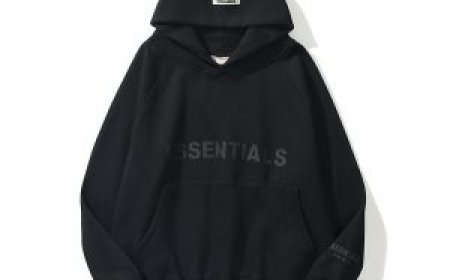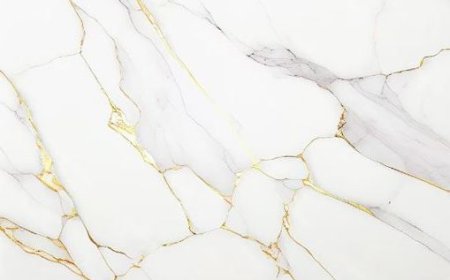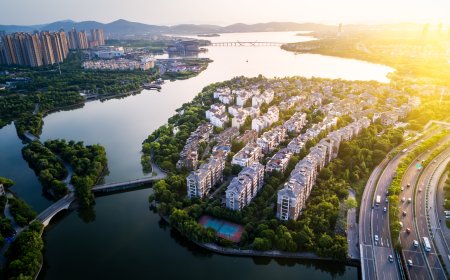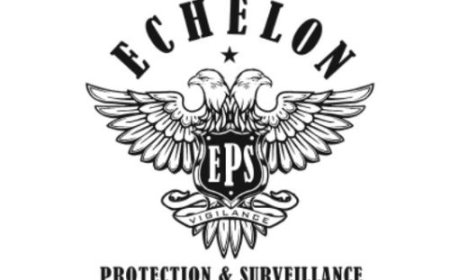How to Get the Best Deals on Gear for Your Everest Base Camp Trek
Take on Nepal’s most iconic trek to Everest Base Camp with our expert team.

When planning your trek to Everest Base Camp, getting the right gear is really important for comfort and safety. Finding good-quality equipment without spending a ton of money can be tough. Here are some straightforward tips to help you score good deals on the gear you'll need.
First, do some homework. Figure out what gear is essential for an Everest Base Camp trek. You'll want solid shoes, jackets that can handle the weather, and sleeping bags that keep you warm at night. Knowing what you need can help you avoid buying stuff you won't use.
Next, shop during the off-season. Many outdoor stores offer big discounts after the main trekking times, usually in late winter or early spring. This is a great chance to snag last season's gear, which is still in great shape but much cheaper.
Also, keep an eye out for sales and special offers. Lots of popular outdoor brands have seasonal sales, so check their websites or sign up for email alerts to catch the best deals. You might also want to check out websites that sell discounted or second-hand gear, where you can find great stuff thats still usable.
Lastly, think about renting gear if youre on a tight budget or dont want to spend a lot. Many trekking companies in Nepal offer rental options for items like boots, jackets, and sleeping bags, which you can use while youre there.
By using these tips, you can get properly equipped for your Everest Base Camp trek without spending a fortune.
Gear Checklist for Everest Base Camp Trek
Getting ready for an Everest Base Camp trek? The right gear is super important. Start with a solid pair of trekking boots that give you good support for those long, tough trails. Youll want a warm down jacket because it gets chilly up there. Moisture-wicking clothes are a must to keep you dry. A warm sleeping bag rated for -20C is also a smart choice. Dont forget a headlamp, a sturdy backpack, and trekking poles. Good gear not only makes your trek more comfortable but also keeps you safe. A checklist helps make sure you're set for the tough conditions youll face.
Choosing the Right Trekking Boots
Trekking boots are key for your Everest Base Camp adventure. Look for boots that are comfy, give ankle support, and are tough enough for the journey. They should be waterproof and breathable to keep your feet dry when the weather changes. A good tread is important for grip on rough trails. Make sure to break them in to avoid blisters. If its going to be cold, go for boots with insulation. Aim for a fit that leaves room for your toes but keeps your heel snug for those long trekking days.
Best Sleeping Bags for Your Trek
Picking the right sleeping bag is crucial for a nice night's sleep on the trek. Find one thats rated for -20C because it can get cold at higher altitudes. Down sleeping bags are lightweight and packable, which is great for warmth. Synthetic bags are usually cheaper and stay warm even if they get a bit wet. Go for a mummy shape to trap heat better. A good sleeping bag will help you stay warm and rested, giving you the energy to take on each day.
Layering Your Clothes
When youre trekking to Everest Base Camp, layering is key to staying comfy. Start with a moisture-wicking base layer to keep sweat off your skin. Then add an insulating mid-layer, like fleece or down, for warmth. The outer layer needs to be windproof and waterproof to shield you from harsh weather. Make sure to bring extra socks, gloves, and hats since those parts get cold easily. Layering lets you adjust your clothing based on the temperature, helping you stay comfortable no matter what the weather throws at you.
Saving Money on Gear
You can save cash on gear for your trek without skimping on quality. Look for end-of-season sales where you can score discounts on good gear. Check out second-hand options from reputable stores or online. Renting gear like sleeping bags and trekking poles can also help cut costs, with some places in Nepal offering rentals at good prices. Make sure to compare prices from different sellers to find the best deal. Keep an eye out for special offers or bulk purchase discounts too.
Top Packing Tips for Your Everest Base Camp Trek
Packing smart is super important for your trek to Everest Base Camp. Start with a lightweight and sturdy backpack that fits comfortably and has enough room for everything you need. Choose items that can do double duty, like a jacket that keeps you warm and dry or trekking poles that can help with photography. Use compression bags to save space and keep things organized. Dont overpack; extra weight can wear you out. Always bring extra socks, gloves, and a first aid kit. Just remember to find a balance between comfort and practicality so youre ready for any weather without carrying too much.
How to Prepare Physically for an Everest Base Camp Trek
Getting in shape for the Everest Base Camp trek takes some effort. Start training about 3-6 months before your trip by adding cardio workouts like hiking, walking, or biking to your routine. Focus on building endurance with long walks uphill since the trails in Nepal can be tough. Strength training will help your legs, core, and heart, plus throw in some flexibility exercises to keep injuries away. Practice hiking with a loaded backpack to get used to the demands of trekking for long days at high elevations.
The Best Time to Visit Everest Base Camp
The ideal times to visit Everest Base Camp are in the pre-monsoon season from late March to May and the post-monsoon season from late September to November. These months bring clear skies, nice temps, and little rain, so its perfect for trekking. The trails are less busy during these times, letting you soak in the amazing views of the Himalayas. Stay away from the monsoon season (June to September) because heavy rains can make the trails muddy. Winter (December to February) is also tough with freezing temps and snow, even though the views are breathtaking if youre ready for the cold.
The Impact of Altitude on Your Everest Base Camp Trek
Altitude sickness is something to watch for on your trek to Everest Base Camp. Starting at 2,860 meters and climbing to over 5,300 meters can lead to headaches, nausea, and dizziness. To help avoid altitude sickness, take regular rest days and dont rush your climb. Drink lots of water to help your body adjust to the higher elevations. If your doctor advises it, consider taking altitude sickness medication, like Diamox. If your symptoms get worse, its important to head back down. Knowing how your body responds to the altitude can make your trek safer and more enjoyable.
Choosing the Right Trekking Agency for Everest Base Camp
Picking a good trekking agency is one of the key steps when planning your Everest Base Camp trip. Look for agencies that have certified guides and porters, since safety is crucial on high-altitude treks. Check reviews from other trekkers to see how reliable the agency is. Make sure they provide clear info about their itineraries, gear, and support services. A solid agency will help with all the logistics and get you ready for the challenges, offering advice on everything from gear to staying healthy. Choosing the right agency can improve your trekking experience.
What Gear Do I Need for Everest Base Camp?
If you're planning to trek to Everest Base Camp, you'll need some specific gear to keep safe and comfortable in those high-altitude conditions. Make sure you have sturdy trekking boots, a warm down jacket, moisture-wicking clothes, and a good sleeping bag rated for colder temps (around -20C works well). A reliable backpack is also a must. Dont forget essential stuff like trekking poles, a headlamp, gloves, hats, and sunglasses to protect yourself from the harsh weather. Youll also need a first-aid kit, sunscreen, water bottles or a hydration setup, and a camera to capture those amazing views. Layering is really important, as it helps you adjust to the changing temperatures during the trek.
Can You Rent Gear for Everest Base Camp?
Yes, you can rent most of the gear you'll need for the trek to Everest Base Camp. Many trekking agencies in Kathmandu and Lukla offer all sorts of gear for rent, like jackets, sleeping bags, trekking poles, and boots. Renting is a budget-friendly option if you don't want to buy expensive gear or if you have limited packing space. Just make sure the gear is in good shape and suitable for high-altitude trekking. Renting can save you some cash, but be sure to test everything before you head out on the trek to ensure it fits well and keeps you warm.
How Do Supplies Get to Everest Base Camp?
Supplies get to Everest Base Camp mostly by porters and yaks. Once you land in Lukla, local porters carry food, gear, and medical supplies through tough terrain. At higher altitudes, yaks help with heavier or bulkier items. Its a tough job given the challenging environment, and it usually takes several days for supplies to make it to Base Camp. The logistics of getting everything to such a remote and high location are impressive and rely a lot on the strength and endurance of these local carriers.
What is the Best Bag for the Everest Base Camp Trek?
For the trek to Everest Base Camp, you'll want a good quality trekking backpack to carry your gear comfortably. A 40-60L backpack is usually perfect. Look for one with decent back support, padded straps, and multiple compartments to keep everything organized. It should also be lightweight, waterproof, and tough enough to handle the conditions of the trek. Popular choices are the Osprey Aether AG and the Deuter Aircontact Lite. Make sure it fits well since youll be carrying it for hours every day. A daypack is also handy for water, snacks, and a camera when you want to take short trips during your trek.
Conclusion:
Getting ready for the Everest Base Camp trek means planning carefully, especially when it comes to gear and logistics. You can rent many essential items to save money, but putting some investment into quality gear can make your trek more comfortable and safe. Knowing how supplies reach Base Camp gives insight into the treks challenges. Picking the right backpack is key for holding and organizing your gear. With the right prep gear, supplies, and support, your Everest Base Camp adventure will be one to remember, filled with stunning views, personal achievement, and unforgettable memories.





































![Play99 Login & Registration Guide for Indian Users [2025 Update]](https://www.atlantanewsplus.com/uploads/images/202507/image_140x98_6870c1df7bfcd.jpg)